Barcode Burr puzzle
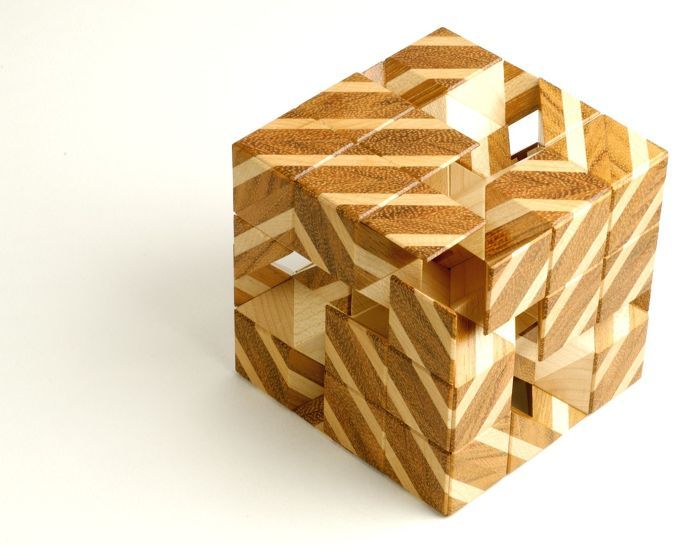
all pieces extended (42nd step)
This puzzle is based upon a structure made up of six identically shaped pieces which interlock in such a manner that any piece may be removed by simply pulling it straight out of the puzzle while leaving the other five still interlocked together. This is an unusual trait for an interlocking structure — most designs based upon rhombic dodecahedral geometry (as this one is) necessitate that the assembled puzzle separate into two halves, rather than pull apart one piece at a time.
By inserting small metal pins into strategic locations on the puzzle pieces, and by cutting grooves in the appropriate places for these pins to ride in, it is possible to prevent certain puzzle pieces from moving unless other pieces are in the proper orientation. The best way to think of this is to consider the grooves as simple mazes which dictate the path that the pins must follow in order to escape.
Each puzzle piece interacts with four of the other pieces in this manner, making a total of 12 individual pin-mazes which must be solved simultaneously in order to get the puzzle apart (or back together). These mazes are each based upon a 2×2 grid, which means that there are four places within a maze that the pin can be.
Looking at it from the standpoint of actually manipulating the puzzle pieces, it is best to think of these four states as follows: there are two puzzle pieces involved (one with the groove, and one with the pin) and each of these pieces can be either extended or retracted.
Now considering that there are six pieces total, and each of the six pieces can have two states while still being locked in place (extended or retracted), there are obviously 64 different states that the puzzle as a whole can be in.
With so many possible ways to notch the pieces (each of which would yield a different puzzle solving experience) Lee Krasnow decided to design the notches of the Barcode Burr so that the pieces moved in a binary progression. This means that when all six pieces are retracted, the first move is to extend piece #1 which will then allow piece #2 to extend. Once #2 is extended, #1 must be pushed back in before #3 may extend. Because #3 is extended, #4 is now able to move, but not until #2 gets pushed back in place. Of course #2 cannot move until #1 is extended again, and then once this happens #1 must be pushed back in before #4 can finally move.
The shorthand notation for this series of movements would be as follows: 1-2-1-3-1-2-1-4 and the full list of moves required to extend piece #6 is as follows: 1-2-1-3-1-2-1-4-1-2-1-3-1-2-1-5-1-2-1-3-1-2-1-4-1-2-1-3-1-2-1-6
Notice that in this sequence, piece #1 is moving every second step, piece #2 is moving every fourth step, piece #3 is moving every eighth step, etc… If you counted, you would see that it takes 32 individual movements before piece #6 is able to extend. At this point, the entire process must be repeated in order to remove piece #6 from the puzzle (after a total of 64 moves). From that point, another 32 moves are required to remove piece #5, followed by another 16 moves to remove piece #4, etc…
Rather than thinking about the progression of piece movements as a binary pattern, it is easier for the puzzle solver to think about it as a system of simple rules which dictate when a piece is allowed to move:
- A piece may move if the piece immediately before it is extended, but every other piece before that one is pushed back in place.
- A piece may be removed from the puzzle if it is extended, if every piece before it is pushed back in place, and if every piece after it has been removed already.
Although it sounds rather complicated (and it is…) it’s actually not too difficult to get a feel for the interaction between the pieces — several collectors who own this puzzle have compared it to playing a musical instrument in that it’s simply a matter of knowing where to put your fingers and in what order to push them.
An interesting feature of this design is the fact that for this binary progression of piece movements to be truly restrictive, each piece must interact with (and restrict) the other five… but as already mentioned, this is not the case! Each piece of the puzzle moves parallel to it’s opposite piece, and thus they cannot influence each others motions. Think of it as a maze with no turns in it… not very difficult to get out!
Taking this into account, there are shortcuts possible! Opposite pieces (1&5, 2&4, 3&6) do not restrict each other according to the rules listed above, and so for instance, the progression to get piece #4 to move can be shortened significantly to this: 1-2-1-3-4 and the progression to get piece #6 to move can be shortened to this: 1-2-1-3-4-3-1-2-5-2-1-3-4-1-2-1-6 which is only 17 moves rather than the 32 that it would take if no shortcuts were used. Piece #6 may actually be removed on the 33rd movement, rather than the 64th.
Lee Krasnow called this puzzle the “Barcode Burr” because of the striped pattern on the surface of the cube, and also because barcodes are based upon binary numbers.
In July 2004 this design won an Honorable Mention at the 4th annual IPP design competition, held at IPP24 in Tokyo, Japan.

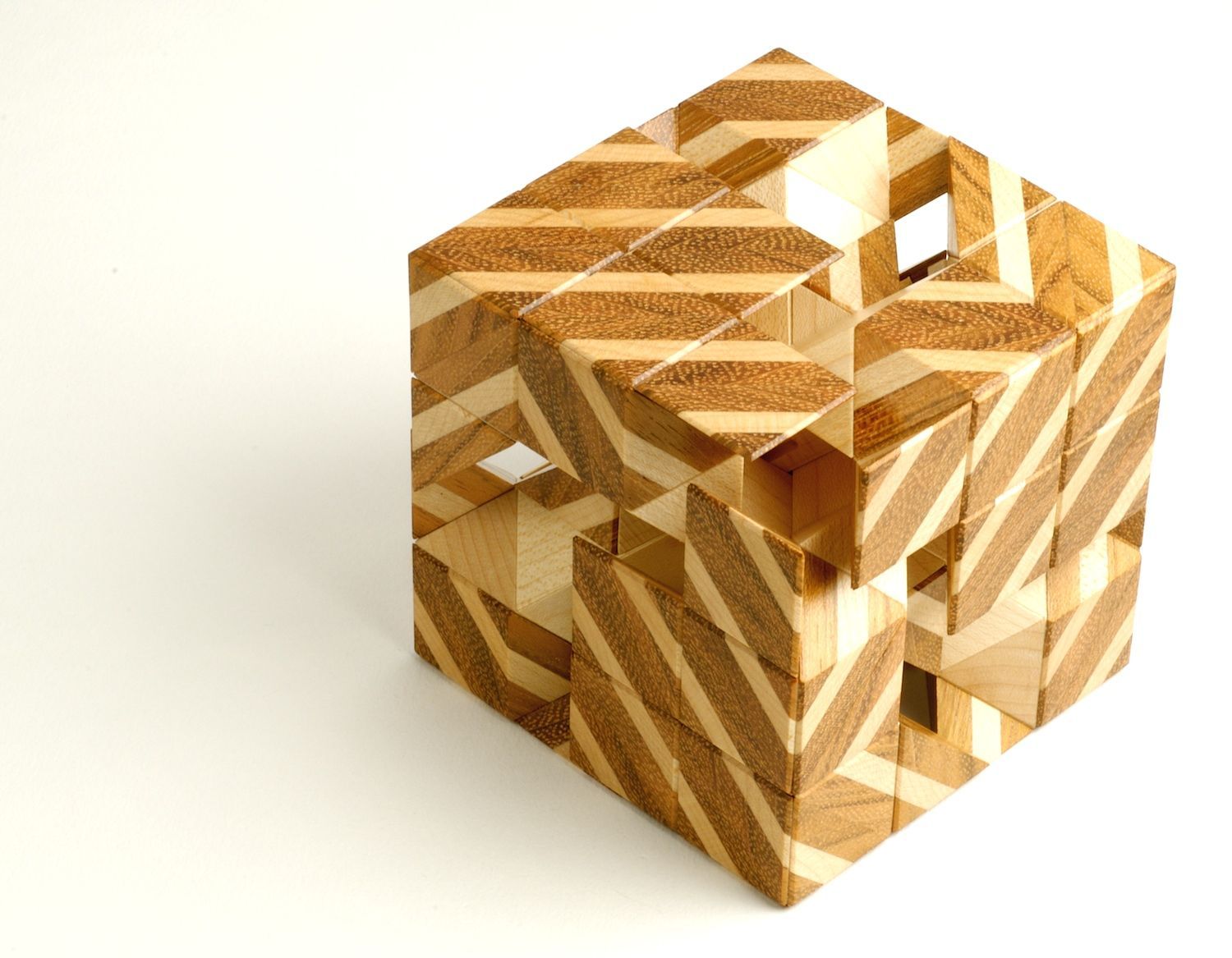
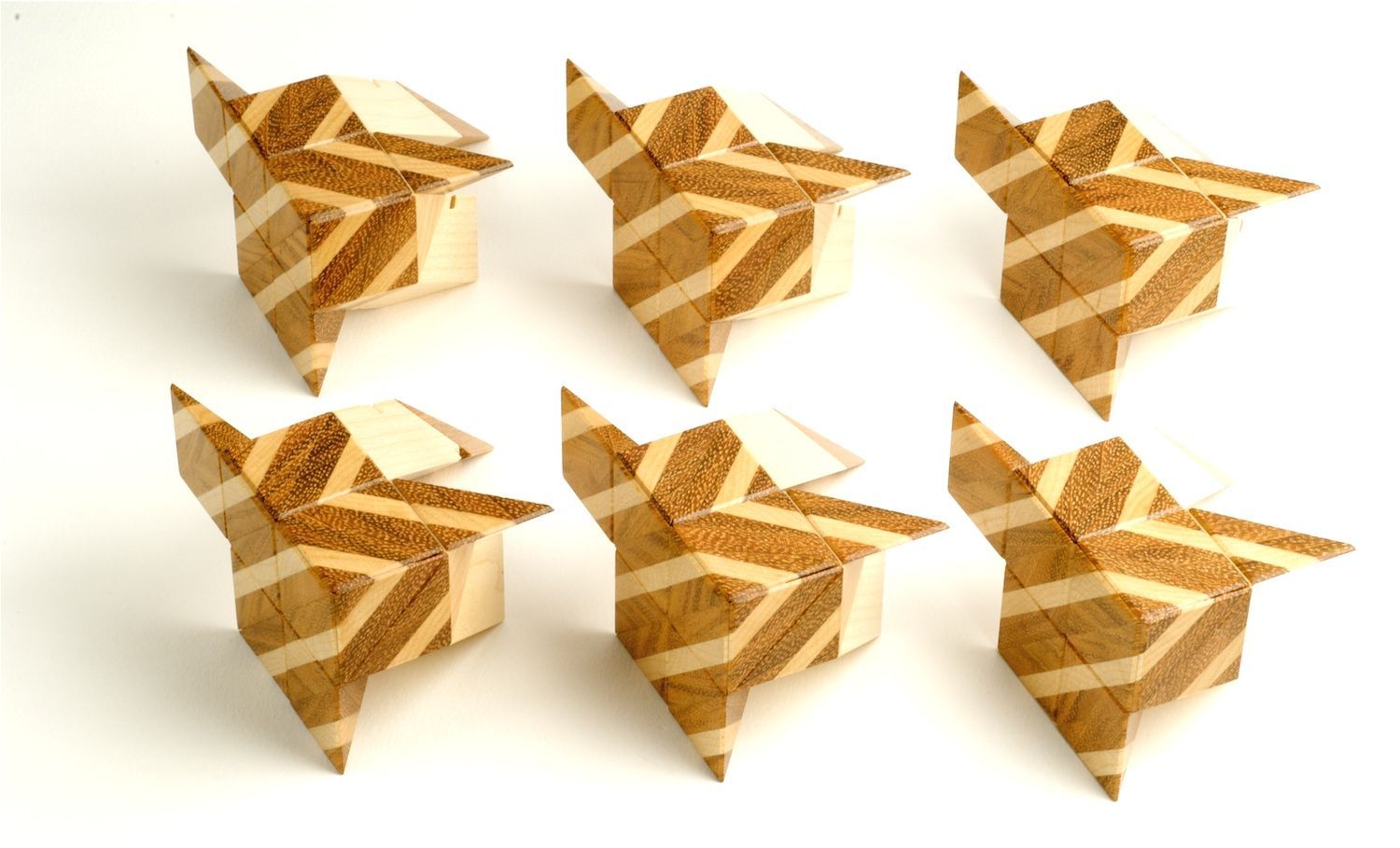
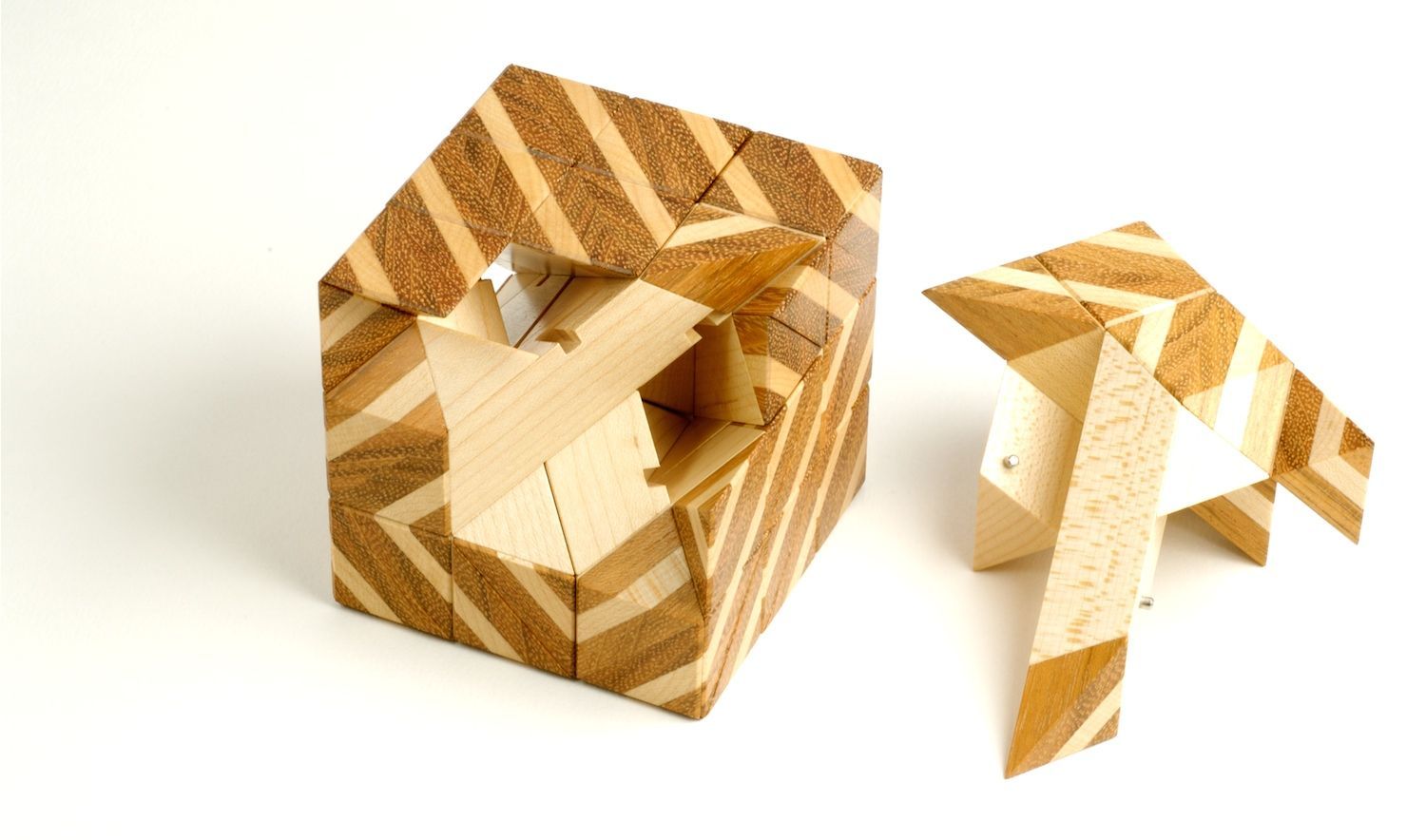
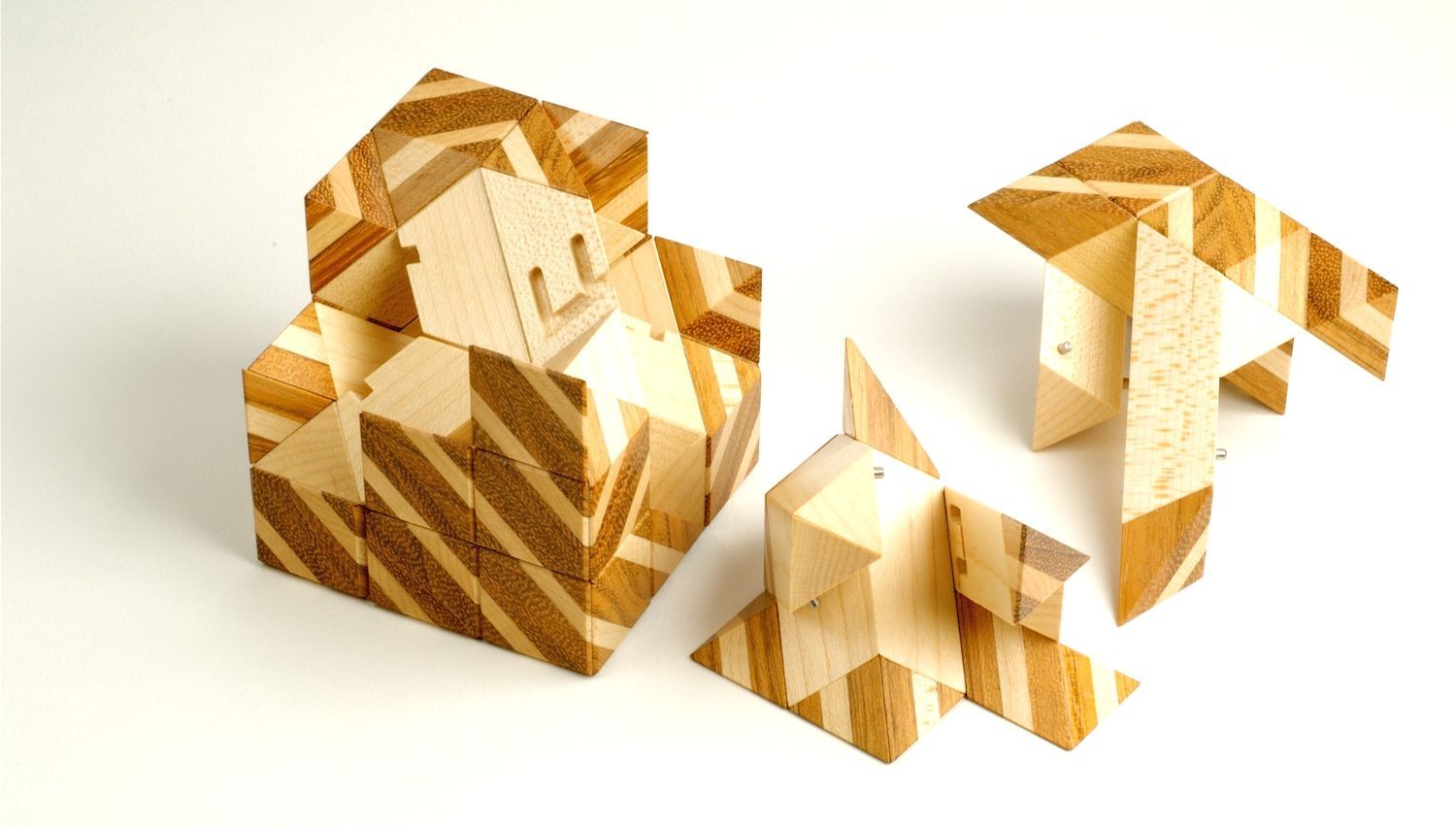
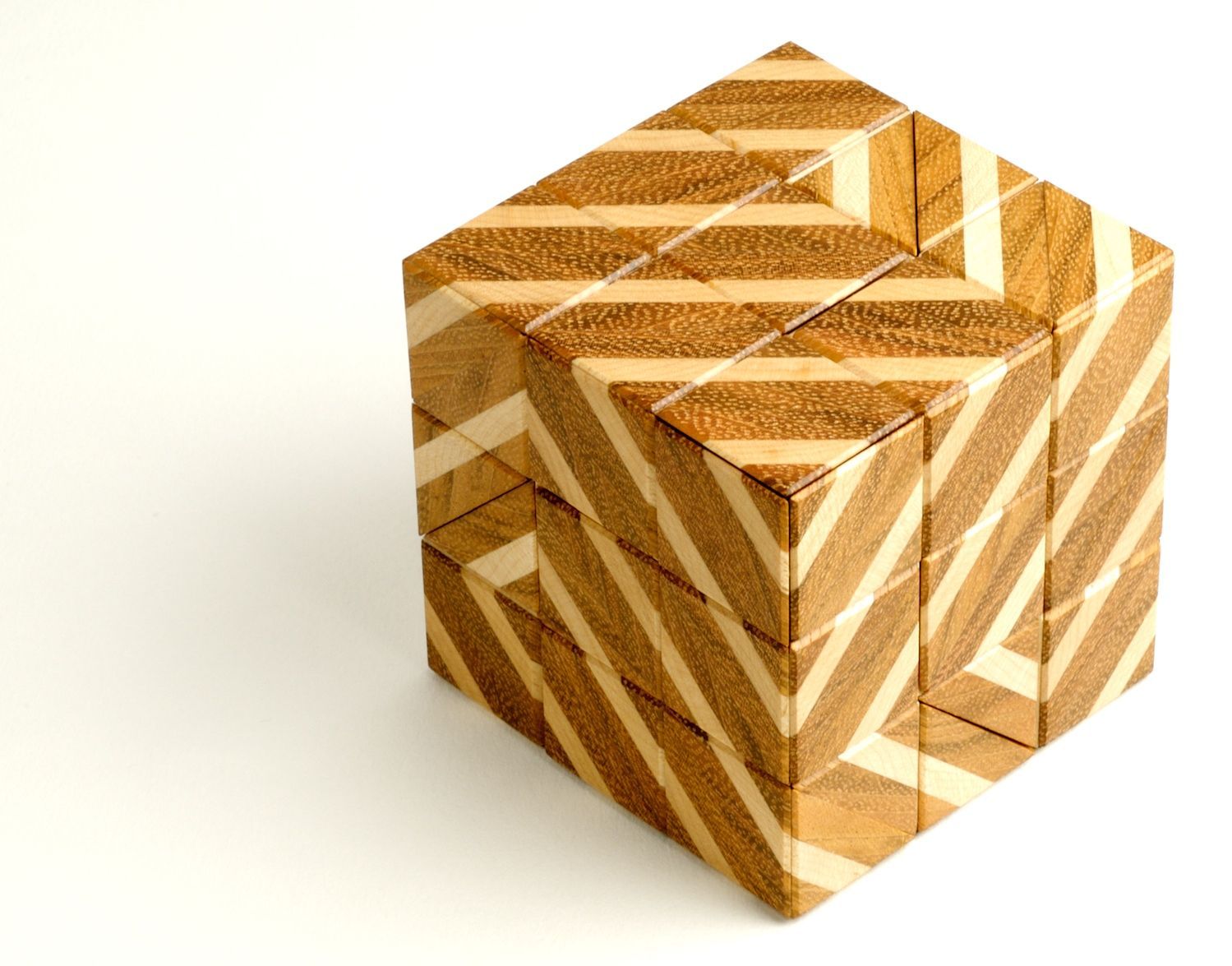
















Comments
I have GOT to figure out how to make this! Nice job!
Hi i was wondering if you have a step by step plan to make this because i am doing an assignment and i have to make a puzzle and i am interested in doing one of these. Thanks
Log in or create an account to post a comment.
Sign up Log in